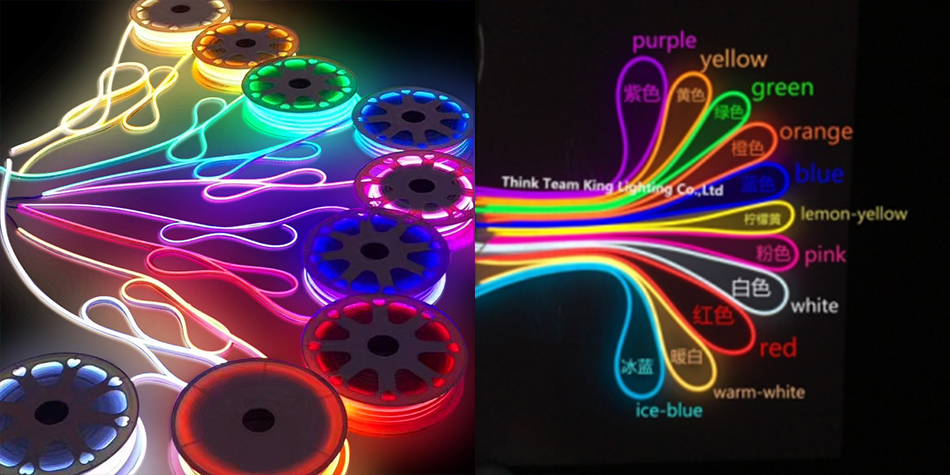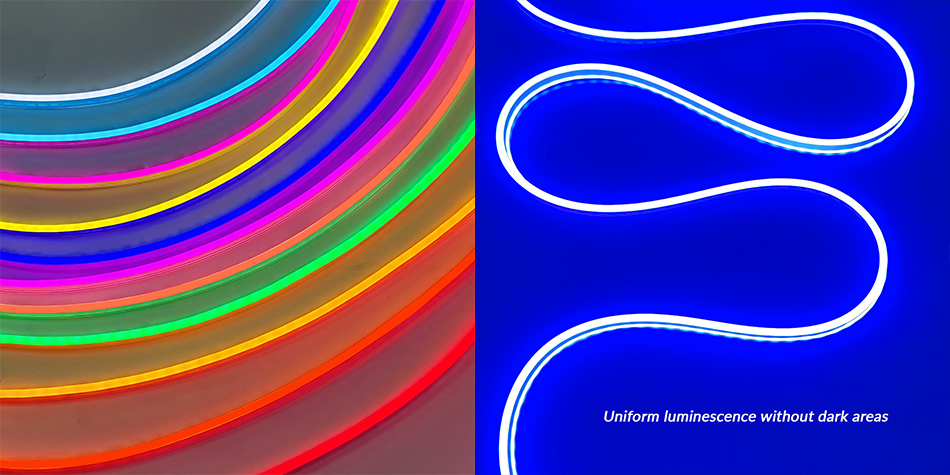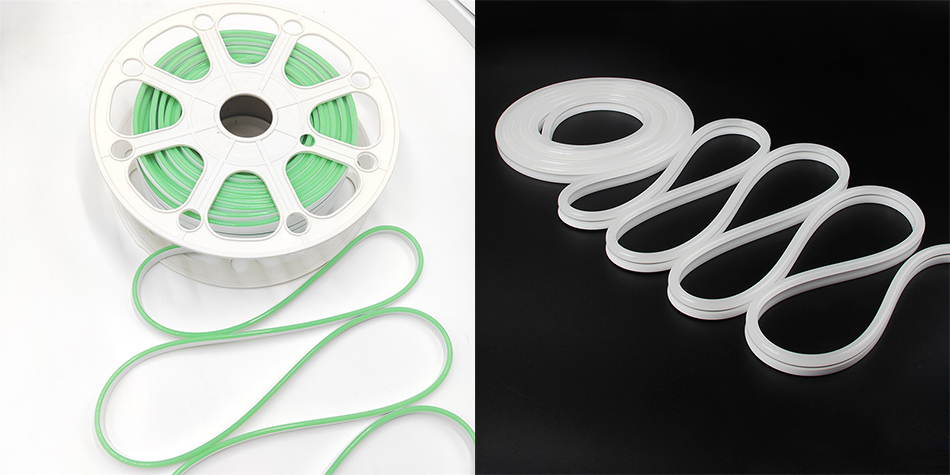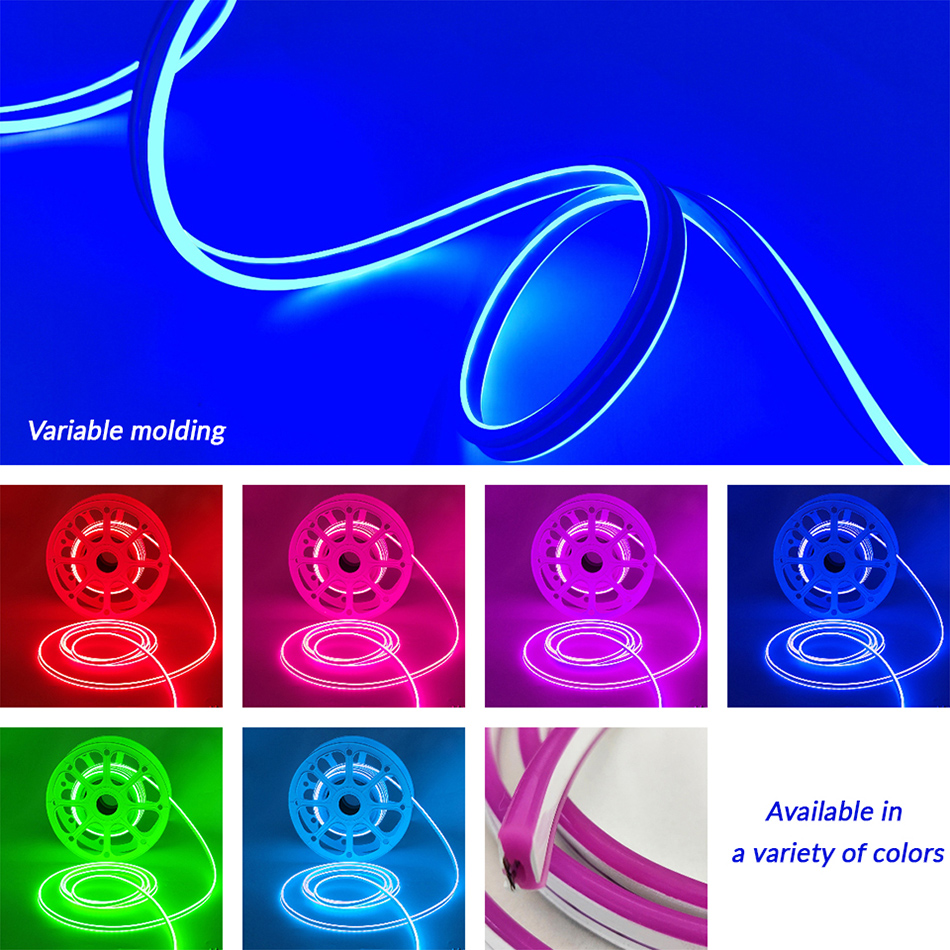Time:2025-07-11
The Role of High-Brightness Neon Flex in Modern Restaurant Design
In the competitive world of hospitality, high-brightness neon flex has emerged as a transformative tool for creating captivating restaurant environments. Restaurants are no longer just dining spaces; they are experiential destinations where ambiance, branding, and visual appeal play pivotal roles in attracting customers and enhancing guest experiences. High-brightness neon flex combines the vibrant allure of traditional neon with advanced LED technology, offering restaurateurs a versatile solution to illuminate menus, highlight architectural features, and craft dynamic atmospheres that align with culinary concepts.
This article explores the technical innovations, design advantages, and strategic applications of high-brightness neon flex in restaurant decor, providing a comprehensive guide for leveraging these systems to elevate dining spaces into memorable destinations.

Technical Foundations: Engineering for Restaurant-Specific Demands
High-Brightness LED Technology for Impactful Illumination
Restaurant environments demand lighting that balances visibility with aesthetic appeal, and high-brightness neon flex delivers through:
Intense Light Output with Uniform Distribution
Advanced LED Arrays: Surface-mounted LEDs engineered to produce vivid illumination while maintaining even light distribution across the strip. This ensures no dark spots, critical for showcasing food, menus, and decor with clarity.
Optical Diffusion Technology: Translucent silicone or acrylic casings that soften high brightness into a warm, inviting glow, avoiding harsh glares that can disrupt dining ambiance.
Thermal Management for Continuous Operation
Heat-Dissipative Substrates: Flexible PCBs embedded with aluminum or copper layers to channel heat away from LEDs, preventing performance degradation during long operational hours common in restaurants.
Temperature Resistance: Capable of operating in kitchen-adjacent areas (up to 50°C) without compromising light output, ensuring reliability near ovens, grills, or other heat sources.
Flexible Durability for Dynamic Installations
Robust Encapsulation: Silicone or UV-stabilized PVC casings that resist grease, moisture, and cleaning chemicals—essential for maintaining performance in high-traffic, high-maintenance restaurant environments.
Bend Radius Engineering: Designed to navigate tight corners, curved booths, or irregular bar shapes with a minimum bend radius (typically 20–30mm), enabling seamless integration into complex architectural designs.

Core Advantages of High-Brightness Neon Flex in Restaurants
Vibrant Visual Impact Without Compromise
Menu and Product Illumination: High brightness ensures menu boards, wine lists, and display cases are clearly visible even in dimly lit dining areas, guiding customer choices with subtle yet powerful illumination.
Branding Reinforcement: Crisp, vibrant outlines of logos or taglines at entrances or bar backs, creating immediate brand recognition and memorability.
Ambiance Control for Diverse Dining Experiences
Dimmable Compatibility: Pair with smart controllers to adjust brightness from daytime vibrancy to evening intimacy, adapting to meal times and special events.
Color Versatility: RGB and RGBW variants allow restaurants to match decor themes, from warm amber hues for fine dining to bold colors for casual eateries, with precise color calibration to align with brand palettes.
Durability in High-Maintenance Environments
Resistance to Contaminants: Sealed connectors and hydrophobic coatings protect against spills, steam, and cleaning agents, reducing maintenance needs in busy kitchen and dining areas.
Long Lifespan: 50,000+ hours of operational life, minimizing replacement costs and downtime for restaurants open 12+ hours daily.
Design Flexibility for Architectural Integration
Custom Shaping: Easily bent around columns, arches, or custom millwork, transforming structural elements into illuminated focal points without compromising on brightness.
Modular Installation: Pre-marked cut points and snap-fit connectors enable custom lengths for unique layouts, from small table accents to large-scale wall installations.

Strategic Applications in Restaurant Decor
Entrance and Exterior Branding
Storefront Signage: High-brightness neon flex outlining the restaurant name or logo on exterior facades, ensuring visibility from afar—even in daylight—with weatherproof designs for outdoor use.
Awning and Canopy Lighting: Flexible strips along awning edges or canopy structures, creating a welcoming glow that draws foot traffic after dark.
Dining Area Ambiance
Architectural Features: Wrapping neon flex around ceiling beams, archways, or booth dividers to define seating zones with vibrant accents, enhancing spatial hierarchy and comfort.
Table and Booth Lighting: Subtle neon strips under tabletops or along booth edges, providing soft, directional light for menus and plates while maintaining an intimate atmosphere.
Bar and Beverage Displays
Backlit Liquor Racks: High-brightness strips behind glass shelves, showcasing bottles with vibrant backlighting that enhances their colors and textures.
Bar Counter Accents: Neon flex along counter edges or cocktail stations, adding a modern touch while improving visibility for bartenders and guests.
Kitchen and Service Areas
Open Kitchen Illumination: Bright, durable strips in food preparation areas, meeting hygiene standards with easy-to-clean casings and resisting heat from cooking equipment.
Service Station Guidance: Colored neon to mark pickup zones or staff-only areas, improving operational efficiency with visual cues.
Outdoor Dining and Patio Spaces
Patio Perimeter Lighting: Weatherproof neon flex along railings or pergolas, creating a vibrant outdoor dining experience that withstands rain, wind, and temperature fluctuations.
Planter and Greenery Accents: Wrapping neon around outdoor plants or vertical gardens, blending nature with modern illumination for Instagram-worthy settings.

Design and Installation Best Practices
Phase 1: Conceptualization and Space Analysis
Ambiance Mapping:
Daytime vs. Evening Lighting: Plan brightness levels and color temperatures (e.g., 3000K warm white for dinners, 4000K cool white for lunch service).
Zonal Design: Use high-brightness neon to highlight key areas (entrances, bars) and softer variants for dining zones, creating visual hierarchy.
Architectural Survey:
Identify curved surfaces, corners, or elevated structures that neon flex can enhance, such as spiral staircases or decorative moldings.
Phase 2: Material Selection and Customization
Environment-Specific Specs:
Kitchen Areas: Choose IP65-rated strips with anti-grease coatings for easy cleaning.
Outdoor Patios: Opt for UV-stabilized silicone casings and IP67 waterproof ratings to withstand weather.
Color and Brightness Calibration:
Use professional colorimeters to match neon output with the restaurant’s brand colors, ensuring consistency across all installations.
Phase 3: Installation Techniques
Secure Mounting Solutions:
Glass and Metal Surfaces: High-strength adhesive with removable backing for easy updates during menu or decor changes.
Rough Surfaces: Aluminum channels or plastic clips for mechanical reinforcement in high-vibration areas like bar counters.
Wiring and Control Integration:
Conceal cables within architectural features (e.g., moldings, false ceilings) for a clean look, using low-voltage wiring to meet safety codes.
Install smart dimmers or DMX controllers for remote adjustment of brightness and color schemes.
Phase 4: Testing and Maintenance
Functionality Checks:
Verify uniform brightness across all strips and color accuracy under different lighting conditions (daylight, evening).
Test dimming ranges and controller responsiveness to ensure seamless ambiance transitions.
Routine Care:
Indoor Strips: Monthly cleaning with mild, non-abrasive solutions to remove dust and fingerprints.
Outdoor Strips: Quarterly inspections for waterproof seal integrity and UV damage, replacing connectors if signs of wear appear.

Key Considerations When Selecting High-Brightness Neon Flex
Brightness and Light Quality
Luminance Output: Choose strips with high luminous efficacy (lm/W) to balance brightness with energy efficiency, avoiding over-illumination that can cause eye strain.
Color Rendering Index (CRI): Prioritize CRI >90 to accurately display food colors, a critical factor for restaurants showcasing visually appealing dishes.
Environmental Resilience
Temperature Range: Ensure strips operate efficiently in the restaurant’s specific environment (e.g., heat-resistant variants for kitchen-adjacent areas).
Chemical Resistance: Silicone casings are ideal for areas exposed to cleaning agents, while PVC may suit low-contamination dining zones.
Control and Integration
Dimming Compatibility: Select strips that work with the restaurant’s existing lighting control system (e.g., DMX, Bluetooth) for unified ambiance management.
Smart Features: Consider motion sensors or occupancy detectors for energy savings in low-traffic areas like private dining rooms.
Certification and Compliance
Safety Standards: Look for UL 1838 (Sign Lighting) and CE EN 60598 certifications to meet local fire and electrical codes, especially for enclosed spaces.
Hygiene Compliance: NSF-listed strips for kitchen areas, ensuring materials are food-safe and easy to sanitize.
Supplier Expertise
Hospitality Experience: Partner with suppliers who understand restaurant-specific challenges (e.g., heat, moisture) and offer custom bending or pre-fabrication services.
Support Services: Choose vendors providing on-site installation training and quick-response maintenance, crucial for minimizing downtime in busy operations.
Overcoming Restaurant-Specific Challenges
Challenge 1: Glare in Dining Areas
Solution: Use diffused casings or indirect mounting (e.g., recessed into shelves) to soften high brightness, combining with dimmers to adjust intensity during peak hours.
Challenge 2: Heat Impact in Kitchens
Solution: Install heat-resistant strips with advanced thermal management and position them at least 30cm away from ovens or grills, using metal brackets for added heat dissipation.
Challenge 3: Moisture and Grease in Service Areas
Solution: Opt for IP67-rated strips with smooth, non-porous casings, paired with regular cleaning schedules to prevent buildup that could affect light transmission.
Challenge 4: Complex Architectural Shapes
Solution: Work with suppliers offering 3D modeling and pre-bent segments, ensuring precise fitment around curved bars or irregular wall designs.
Innovations in High-Brightness Neon Flex for Restaurants
Smart Ambiance Systems
AI-Powered Controls: Algorithms that adjust neon brightness and color based on customer footfall, time of day, or even menu items, creating dynamic environments without manual intervention.
Mobile App Integration: Allowing restaurant staff to tweak lighting schemes from tablets, adapting to private events or seasonal themes in real time.
Sustainable Design Advancements
Energy-Efficient LEDs: New generations of high-brightness LEDs that consume 20% less power while maintaining intensity, aligning with green restaurant certifications.
Recycled Materials: Strips made with post-consumer recycled silicone and PVC, appealing to eco-conscious dining concepts.
Customized Light Patterns
Projection-Mapping Integration: High-brightness neon as a base layer for dynamic light projections, such as menu animations or thematic visuals on walls or ceilings.
Interactive Features: Touch-sensitive neon strips that change color or brightness when guests interact, enhancing engagement in casual dining venues.
Conclusion: High-Brightness Neon Flex as a Culinary Design Asset
High-brightness neon flex has evolved into an essential tool for modern restaurant design, merging functional illumination with artistic expression. By addressing the unique challenges of hospitality environments—from heat and moisture to dynamic ambiance needs—these systems empower restaurateurs to craft spaces that not only showcase their culinary offerings but also create unforgettable guest experiences.
As the industry continues to prioritize experiential dining, high-brightness neon flex stands out for its ability to adapt to architectural complexity, maintain durability, and deliver vibrant, consistent light. By investing in high-quality, compliant systems and leveraging innovative control technologies, restaurants can transform their decor into a strategic asset—one that attracts customers, reinforces branding, and elevates every visit into a memorable journey of sight and taste.